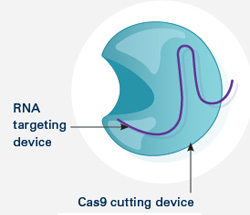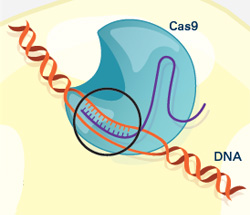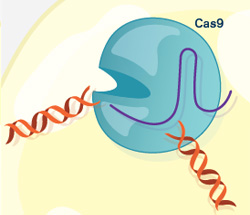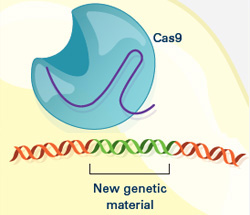This page is historical material reflecting the Feedback Loop Blog as it existed on
December 17, 2015. This page is no longer updated and links to external websites
and some internal pages may not work.
December 17, 2015
The CRISPR gene-editing tool was recognized today by
Science magazine as its “breakthrough of the year.” We support a number of researchers working in this exciting area and have
featured it on this blog. To learn more about this exceptionally promising new method, see below for our illustrated explanation of the CRISPR system and its possible applications.
How the CRISPR System Works

The CRISPR system has two components joined together: a finely tuned targeting device (a small strand of RNA programmed to look for a specific DNA sequence) and a strong cutting device (an enzyme called Cas9 that can cut through a double strand of DNA).

Once inside a cell, the CRISPR system locates the DNA it is programmed to find. The CRISPR seeking device recognizes and binds to the target DNA (circled, black).

The Cas9 enzyme cuts both strands of the DNA.

Researchers can insert into the cell new sections of DNA. The cell automatically incorporates the new DNA into the gap when it repairs the broken DNA.

CRISPR has many possible uses, including:
- Insert a new gene so the organism produces useful medicines.
- Help treat genetic diseases.
- Create tailor-made organisms to study human diseases.
- Help produce replacements for damaged or diseased tissues and organs.





